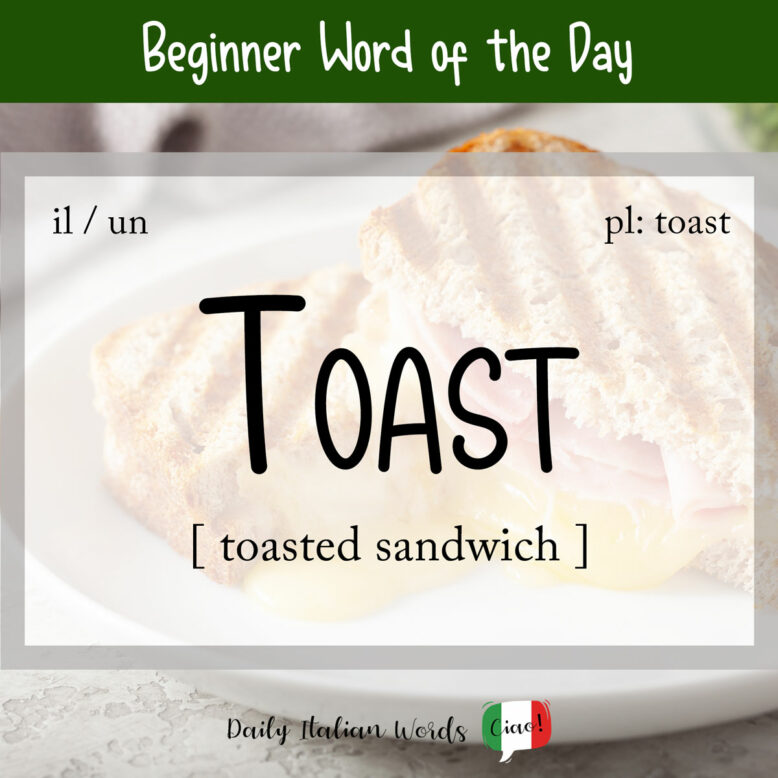When you think of the word toast, what’s the first thing that comes to mind? Probably a slice of bread (pane) that’s just popped out of the toaster (tostapane), covered in butter (burro), jam (marmellata), or peanut butter (burro di arachidi).
Note: Toast isn’t pronounced /toʊst/ in Italian but /tōst/ with a long ‘o’ sound. It is a masculine noun and invariable, meaning that it stays the same in the plural form.

Learn with our video
Although this meaning does exist in Italian, when a person talks about toast, they are almost always referring to two slices of lightly toasted white bread with some kind of savoury filling like cheese (formaggio) and ham (prosciutto) – what we would call a toasty, toasted sandwich or grilled cheese sandwich in English.
Ho mangiato un toast al bar prima di tornare al lavoro.
I ate a toasty at the café before heading back to work.

As you might have guessed from the identical spelling, toast was borrowed from the English toast, which in turn comes from the old French tostee, the feminine past participle of the verb toster (to toast).
So, what if you want to tell your roommate all about that delicious single slice of toast you ate the night before? In that case, it is best to use the expression una fetta di pane tostato / pane abbrustolito (lit: a slice of toasted bread).
Vuoi una fetta di pane tostato? C’è ancora un po’ di marmellata in frigo.
Do you want a slice of toast? There is a bit of jam left in the fridge.
And if the slice of toasted bread comes from a baguette, ciabatta or loaf of sourdough, you should use the term crostino (lit: little crust) instead.
This article is also available in video format on our YouTube channel. The audio version can be found on Podbean, Google Podcast, Apple Podcast and Spotify.
Heather Broster is a graduate with honours in linguistics from the University of Western Ontario. She is an aspiring polyglot, proficient in English and Italian, as well as Japanese, Welsh, and French to varying degrees of fluency. Originally from Toronto, Heather has resided in various countries, notably Italy for a period of six years. Her primary focus lies in the fields of language acquisition, education, and bilingual instruction.


